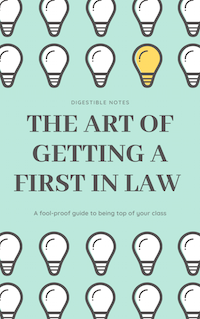Duress, Coercion, and Entrapment
Duress
⇒ To establish the defence a defendant must show that:
- he or she committed the crime because of threats of death or grievous bodily harm;
- a reasonable person would have acted as the defendant did.
To what crimes is duress a defence?
⇒ It has been established that duress is available to all crimes, except murder, attempted murder, and certain forms of treason.
- The leasing case establishing that duress is not a defence to murder is R v Howe [1987].
- By a majority of three to two the House of Lords in R v Gotts [1992] decided that duress was not a defence to attempted murder.
Elements of duress
The defendant must act because of a threat of death or serious injury
⇒ The defendant must act because of the threats or the circumstances.
- See the case of R v Valderamma-Vega [1985]
⇒ The threat must be one of death or grievous bodily harm.
- There is some doubt whether a threat to cause a serious psychological injury would be sufficient.
- The House of Lords in R v Burstow [1997] explained that the phrase 'grievous bodily harm' in the Offences Against the Person Act 1861 included serious psychological illnesses. However, in R v Baker and Wilkins [1997] the Court of Apepal emphasised that only a threat of death or physical injury would suffice.
⇒ The threat can be of death or serious harm to anyone.
- It is clear that the defence is available if the defendant fears that anyone for whom the defendant reasonably regards himself responsible is under threat.
⇒ The threat must not come from the defendant himself.
- See the case of Rodger and Rose [1998]
⇒ The defendant can rely on what he or she reaosnably believed to be a threat.
- In R v Cairns [1999] it was confirmed that if the defendant reasonably believed that there was a threat of death or grievous bodily harm, the defence may be available, even if there is in fact no threat.
The Art of Getting a First in Law - ONLY £4.99
FOOL-PROOF methods of obtaining top grades
SECRETS your professors won't tell you and your peers don't know
INSIDER TIPS and tricks so you can spend less time studying and land the perfect job
We work really hard to provide you with incredible law notes for free...
The proceeds of this eBook helps us to run the site and keep the service FREE!

The reasonable person must have responded to the threat in the way the defendant did
⇒ The jury must decide that the reasonable person must have responded to the threat as the defendant did.
- The jury, in deciding how a reasonable person would respond to the threat, is likely to consider how sevee the threat was and how grave the required crime i.e. the jury is likely to consider whether the defendant responded in a way which was proportionate to the threat.
⇒ The defendant must take any reasonable opportunity to escape from the threat.
- See the case of R v Heath [2000].
⇒ The threat must be of imminent harm.
- In R v Abdul-Hussain [1999], the Court of Appeal stressed that the threat of death or serious injury had to be imminent.
- In R v N [2007] the Court of Appeal upheld a direction that 'there has to be a belief that he reasonably and genuinely believed that he would be killed or seriously injured either immediately or almost immediately'.
⇒ The defendant must have good cause to believe that the threat could be carried out.
⇒ The defendant must not have put him or herself in a position in which he or she could have been threatened in any way.
⇒ Internal duress cannot be relied upon.
- Defendants cannot rely on threats that come from themselves. This was made clear in R v Quayle [2005].
Coercion
Summary
⇒ Defence of marital coercion was abolished in 2014.
Entrapment
Summary
⇒ It is not a defence for the defendant to show that he or she committed the offence only because he or she was trapped by the police into committing it.
⇒ See the case of R v Sang [1980], for example.
⇒ Although entrapment does not provide a general defence, evidence obtained inappropriately can be excluded under the law of evidence or even lead to a reduction in a sentence.
- See, for example, R v Looseley [2001].
Law Application Masterclass - ONLY £9.99
Learn how to effortlessly land vacation schemes, training contracts, and pupillages by making your law applications awesome. This eBook is constructed by lawyers and recruiters from the world's leading law firms and barristers' chambers.
✅ 60+ page eBook
✅ Research Methods, Success Secrets, Tips, Tricks, and more!
✅ Help keep Digestible Notes FREE

